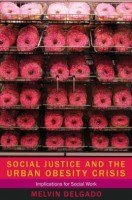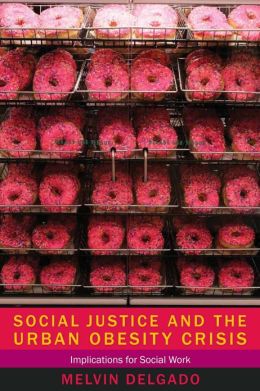 Author: Melvin Delgado
Author: Melvin Delgado
Publisher: Columbia University Press
Book Review by: Deekay Daulat
The statistics are sobering. In 2004, two thirds of all adults were either overweight or obese. And 16 percent of all children and adolescents were overweight. An additional 34 percent of these youngsters were at risk for becoming overweight.
Melvin Delgado presents lots of data that helps the reader look at the dimensions and understand the true extent of the obesity epidemic in the United States
The figures he cites showing great weight gain across all age groups in recent years are alarming, to say the least. Delgado points out that in 2007 the daily average food intake had increased by 400 calories more than in 1985, and 600 calories more than in 1970.
He indicates that an increased intake of 100 calories per day results in a net gain of 10 pounds over a year. That means the average person was weighing 40 pounds more in 2007 than he or she was in 1985, and 60 pounds more than in 1970.
By 2010, one researcher – Grady – concluded that 30 percent of the entire U.S. population had become obese from 2007 to 2009. Let’s take a look by region and state. In a three-year period, nine southern states had populations that measured more than 30 percent obese.
These states were: Alabama, Arkansas, Louisiana, Kentucky, Mississippi, Oklahoma, South Carolina, Tennessee, and West Virginia. Mississippi had the highest rate of obesity, with 34.4 percent of its people obese. By the measure of being overweight (not obese) California took the lead with 60 percent of its people being overweight (California Health Policy Forum, 2009).
A pattern is shown here. States and cities that had large percentages of low-income people of color had much higher rates of obesity than other areas. For example, Arizona is not among the top 10 states by obesity ranking, but among its Latino people, 33 percent were found to be obese in 2010.
The data presented in this eye-opening show varying percentages of obese people among all ethnic populations in the U.S. Native Hawaiians and Pacific Islanders have the highest percentage of obese people, with 63.5 of them over the age of 18 being in this category. African Americans ranked second, with 33.2 percent over 18 being obese. The lowest ranking group in obesity in the U.S. are Asians, with only 12.5 percent being obese.
Melvin Delgado takes a look at the widespread prevalence of obesity in populations of color in urban areas, the causal relationships and correlations, and points out several “ecological, environmental, social and spatial aggravators” of this health crisis.
He then proposes solutions to mitigate the high incidence of obesity in those areas of cities with people of color that have large numbers of obese people. By looking at urban obesity “through a social justice lens” in this book, he is first in intending to help social workers and others “develop targeted interventions for effective outcomes.”
After dissecting the problem of urban obesity from individual, family, group, community, and policy perspectives, he points out to at least five causes (or correlations if causal relationships have not been proven) of this growing epidemic:
- The food industry’s advertising strategies, which promote unhealthy choices
- The failure of local markets to provide good food options
- The lack of safe exercise spaces
- The paucity of health education
- The connection between food stamps and obesity
Delgado presents various sets of solutions to the obesity crisis in America, “which can create chronic health conditions for those least able manage them” (low-income people). This problem can also have severe “financial and social consequences for society as a whole,” if left unchecked, he warns.
Among his proposals to address the growing epidemic of obesity are:
- Effective health-promotion programs
- Youth-focused interventions
- Community gardens
- Community-based food initiatives
Melvin Delgado is professor and chair of the macro-practice specialty at the School of Social Work, Boston University. He is the author of 20 books, including Latino Small Businesses and the American Dream: Community Social Work Practice and Economic and Social Development and Social Work Practice with Immigrant and Refugee Youth in the United States.







